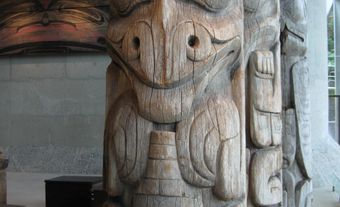A genre of descriptive program music originally known as Battaglia, popular from the 15th to the early 19th centuries. Beethoven's Wellington's Victory (1813) is a late example. Although Canada never has been the scene of major wars, there are at least three descriptive battle pieces of Canadian interest.
Siege of Quebec
Franz Koczwara (ca 1750-91), a Czech composer who was living in London at the time of his death, had had a great success with his The Battle of Prague (ca 1788). As a result he began another work of the sort, but it remained to W.B. de Krifft to complete it after Koczwara's death. Siege of Quebec (Bland ca 1791) is a 'sonata for the harpsichord or pianoforte with accompaniments for a violin, violoncello & tympano ad libitum' dedicated to 'the Officers &c engaged in that Glorious Service, Sept 10th 1759'. The work begins with a favourite song of General Wolfe, one which was sung for him the evening before his death. After a slow march, trumpets and drums give the signal for the attack, the British soldiers intone a national air (from Purcell's Bonduca), and the attack begins. De Krifft took over the composition at the point where 'the heavy artillery ascends the rocks'. Further directions in the score describe the effects meant to be achieved: cannons fire and there is fighting with swords, the wounded are lamented, and another skirmish follows, but the trumpets announce a 'flag of truce for a capitulation'. The deaths of General Wolfe and his men are lamented; then follows a march of victory and 'General Rejoicing'. Before a performance in Quebec 1 Jul 1806 the work was described in the Mercury as a 'splendid and grand piece (told in action)'. Ten Centuries Concerts revived Siege of Quebec 9 Dec 1962 in an arrangement by Beckwith, Kallmann, and Schafer. The performance was accompanied by colour slides of historical paintings. The Trio Nouvelle-France also revived the original score, minus percussion, for a JMC tour 1978-9. For a subsequent recording (RCI 500) the percussion was restored. 'The Attack' and 'March of Victory' have been recorded by The Central Band of the Canadian Forces in an arrangement by A.C. Furey on London SW 99559
The Charge at Batoche
'A descriptive song' by John Wilson Bengough (words) and Barton Browne. The fighting between Louis Riel's Métis forces and the government troops under General Middleton, 11 May in the Northwest Rebellion of 1885, is the subject of this musical scena, in which the battle is illustrated graphically in the piano part. The printed lyrics and an abbreviated recorded version are included in the Jackdaw kit Riel issued by Clarke Irwin, Toronto, in 1967.
The Battles of Lake Champlain and Plattsburg
A grand sonata for piano by Francesco Masi (Boston 1812), which celebrates a US victory in the War of 1812.
It is not known whether F.H. Glackemeyer's Chateauguay March (1813, lost) includes descriptive music. There is a section titled 'Battle Music' in Leo, the Royal Cadet that depicts a battle with Zulu warriors.
See also History of Canada in music; Wars, rebellions and uprisings.

 Share on Facebook
Share on Facebook Share on X
Share on X Share by Email
Share by Email Share on Google Classroom
Share on Google Classroom


